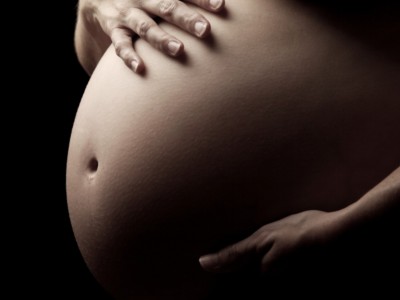Paternity Test During Pregnancy

Contents:
- Establishment of Paternity Before a Baby is Born
- The Main Difficulties
- How this Procedure is Carried Out
- Establishment of Paternity After the Childbirth
Establishment of Paternity Before a Baby is Born
This test often helps defend children’s rights, in the framework of litigation processes for receiving an inheritance, for example. In these cases, procedure of paternity establishment is applied by means of the analysis of DNA fragments. It doesn't cause any troubles, there would be enough just to take biological material of the child and his alleged father and to compare them. But what if paternity definition test has to be made before the child's birth?
In former days doctors suggested a mother to remember two dates in her last monthly periods before pregnancy – the last date and the next to the last one to calculate approximately the ovulation period. Thus, it is possible to establish conception term. But this method gives confidence in result only to the woman, but not to her man. Today there is a way to carry out this procedure without waiting for appearance of the child having been born.
The Main Difficulties
It is possible to compare results of DNA before the childbirth to establish the biological father of the child or to disprove participation of a certain person in his conception.
There are two methods of such analysis:
- invasive;
- noninvasive.
The family clinic «Repromed» has an opportunity to carry out the DNA test for establishment of paternity by the noninvasive method by mother’s blood. It is possible to perform such test during pregnancy period from 16th week. Sometimes doctors allow the testing from 9th week of pregnancy, but only when Y-chromosome has been revealed during determination of a fetus’s gender.
How this Procedure is Carried Out

In order to perform the test, it is necessary to take venous blood from mother according to the special standard, and samples from alleged fathers have also to be taken. Experts recommends participation of all alleged fathers in the test to receive the most reliable result.
As samples from the father, the following biological specimens can be provided:
- hair with bulbs (not less than 5 hairs);
- chewing gum;
- nails;
- cigarette stumps with saliva remainder;
- blood spots;
- sulfur from ears;
- scrape from cheeks;
- sperm, etc.
Blood of a mother is investigated in laboratory to determine a gender of the child. Then results are compared to blood of the mother and biological samples of the alleged father. If it is established that the girl has to be born, then the analysis of SNP markers of the X-chromosome is made, as it is known that girls inherit two X-chromosomes, one of which is father’s. If the child is male, then there would be examined Y-chromosome which is inherited from the father’s side.
Determination of paternity during pregnancy is possible upon one condition – the main thing is that mother would not have been subjected to blood transfusion procedure for half a year to the date of analysis. It will be specified in test results as "excluded as the biological father" or as "can't be excluded as the biological father". The more exact results may be obtained after the child's birth only, because the probability of paternity in such analysis can’t be calculated in percentage.
Establishment of Paternity After the Childbirth
Anyway, if the situation and circumstances allow, it you can carry out the tests after the child's birth. The main way of paternity determination is the DNA analysis. The only one sample of biological material is required of the child and the father to perform the tests. That is necessary for keeping procedure in secret.
A scrape from an internal surface of a cheek will be sufficient for carrying out this analysis. The participation of experts is not required as it is possible to make such scrape independently. But then you have to provide it to medical experts for research and obtaining a result.
The child's mother can also take part in procedure for receiving more reliable result. It promotes higher authenticity of the carried out analysis. But if the mother doesn't participate, then it is necessary to use more DNA fragments for the test.